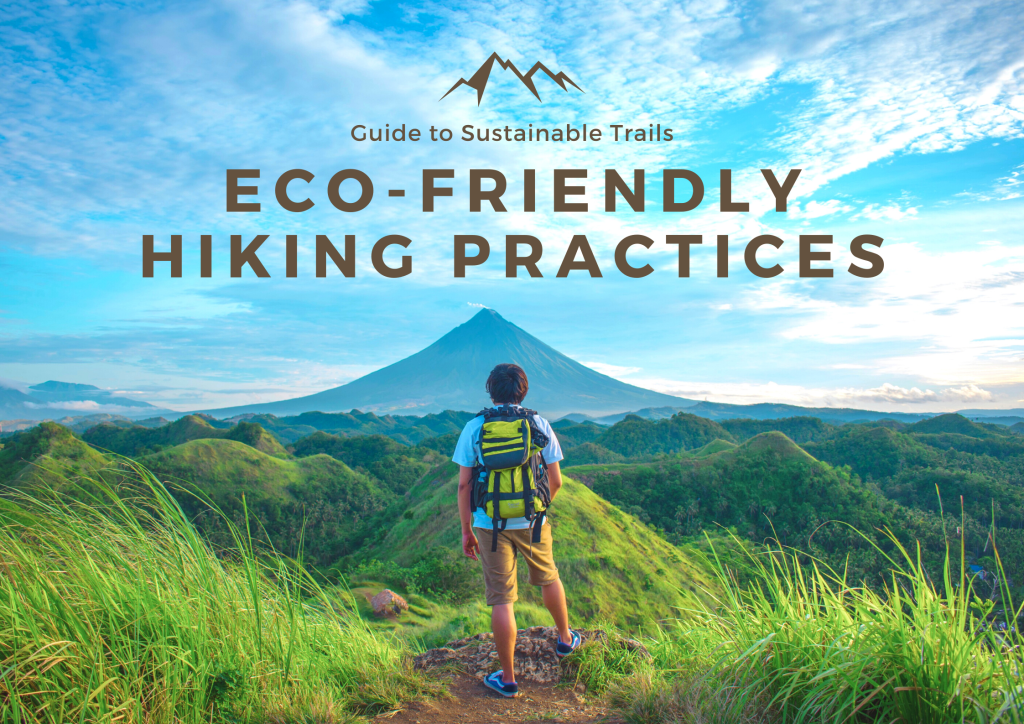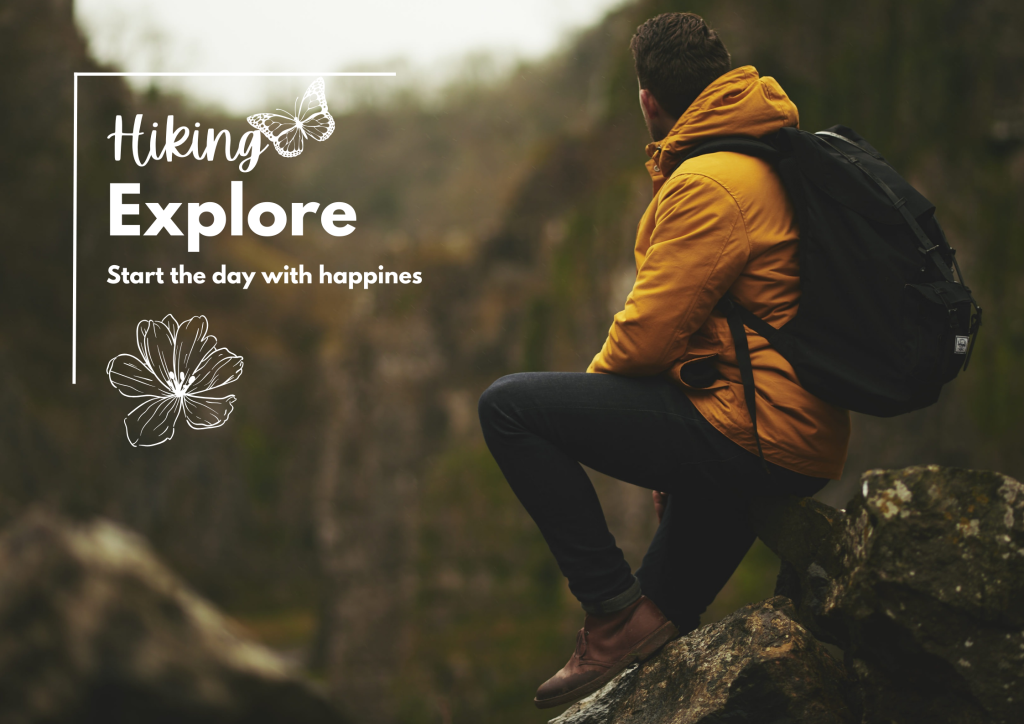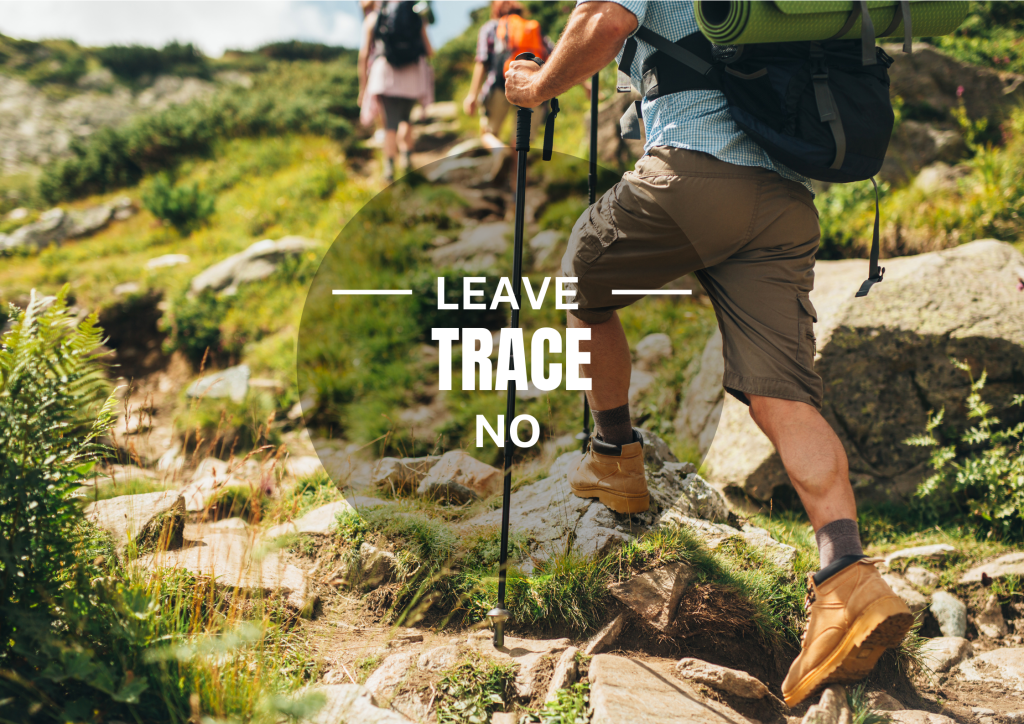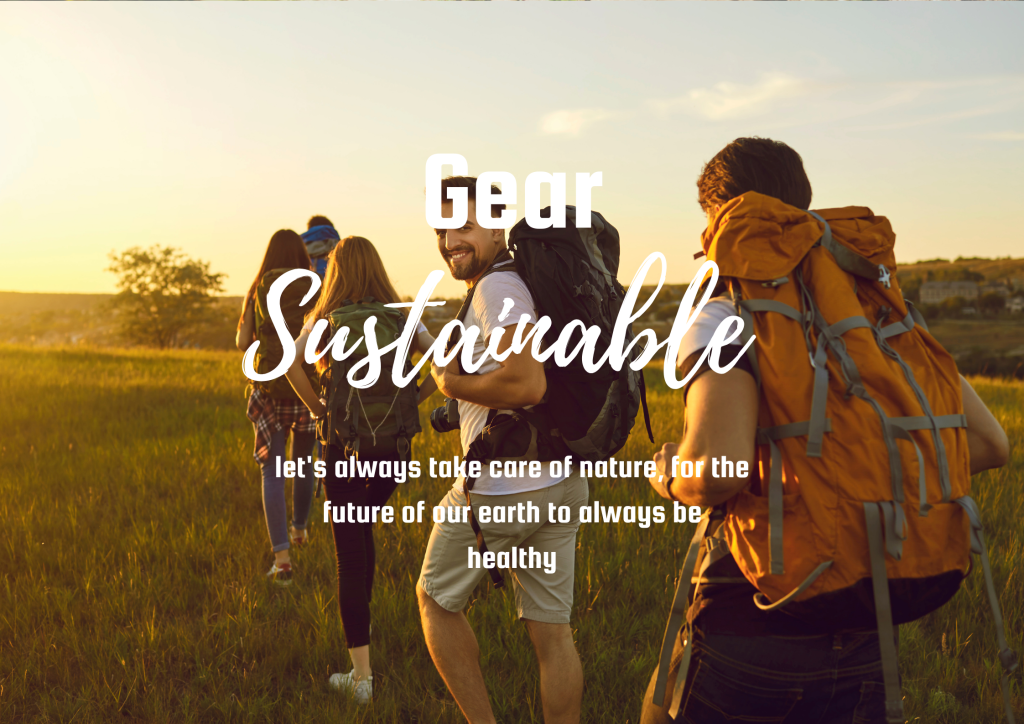Eco-Friendly Hiking Practices: Discover essential tips for environmentally responsible hiking, including staying on trails, minimizing waste, and choosing sustainable gear. Learn how to preserve nature while enjoying your outdoor adventures.

here are the 9 best practices for an environmentally Eco-Friendly Hiking Practices
- Bring a reusable water bottle to minimize plastic waste.
- Stay on marked trails to protect natural habitats and prevent soil erosion.
- Avoid feeding animals to maintain their natural foraging behaviors.
- Follow a ‘leave no trace’ principle by packing out all trash and waste.
- Make and bring your own food to reduce reliance on packaged products.
- Dispose of your trash properly by using designated receptacles.
- If you plan to have a campfire, choose an open area to minimize environmental impact.
- Select sustainable gear and equipment made from eco-friendly materials.
- Practice responsible camping and hiking by respecting the environment and fellow hikers.
Embarking on a hiking adventure is not just about exploring the beauty of nature; it’s also about preserving it. In this article, we delve deep into “Eco-Friendly Hiking Practices,” providing essential tips and insights for hikers who love the planet as much as their adventures. Our goal is to empower you to leave a positive impact on the trails you traverse.
Table of Contents
Understanding the Impact of Hiking on Nature

Before we explore eco-friendly practices, let’s understand why they are crucial. Hiking, while a low-impact activity, can still harm natural habitats if not done responsibly. Soil erosion, water pollution, and disturbance to wildlife are just a few impacts to consider.
The Principles of Leave No Trace

“Leave No Trace” is a set of principles designed to minimize outdoor activities’ environmental impact. They form the backbone of eco-friendly hiking practices.
Plan Ahead and Prepare: Knowledge is power. Understanding the specific regulations and sensitivities of the area you plan to hike in ensures you are prepared for its unique conditions. This includes checking weather forecasts, knowing the terrain, and being aware of any wildlife you might encounter.
Travel and Camp on Durable Surfaces: The path less traveled isn’t always the eco-friendliest. Stick to established trails and campsites to avoid damaging undergrowth and habitats.
Dispose of Waste Properly: “Pack it in, pack it out” is a golden rule. All trash, leftover food, and litter must leave the trail with you. Biodegradable soap and proper human waste disposal methods are essential components of this principle.
Leave What You Find: Preserve the past for the future. Avoid disturbing historical artifacts and natural features. Even small actions like picking flowers or moving rocks can have a lasting impact.
Minimize Campfire Impact: Where fires are permitted, use established fire rings, keep fires small, and burn all wood to ash. Remember, some ecosystems are particularly vulnerable to fire.
Respect Wildlife: Observe wildlife from a distance. Do not feed animals, as this damages their health and alters natural behaviors.
Be Considerate of Other Visitors: Respect other trail users. Keep noise levels down and yield to others on the trail, especially on narrow paths.
Embracing Sustainable Gear

When it comes to eco-friendly hiking, the gear you choose plays a pivotal role. Sustainable gear is designed with environmental preservation in mind. This means opting for products made from recycled materials, organic fabrics, and natural fibers, which have a lower environmental impact compared to conventional materials. Brands that follow fair trade practices and have transparent supply chains are also preferable.
Consider the longevity of the products you buy. Durable gear may come with a higher upfront cost, but it lasts longer, reducing the need for frequent replacements and thus minimizing waste. Also, explore the world of second-hand gear. Platforms specializing in used outdoor equipment not only offer affordable options but also support the idea of recycling and reusing.
Remember, every piece of sustainable gear you choose is a step towards reducing your ecological footprint on the trails.
Volunteer and Advocate
Beyond personal practices, being an eco-friendly hiker involves active participation in broader conservation efforts. Volunteering for trail maintenance or clean-up projects is a direct way to contribute. These activities help in preserving trail conditions, preventing erosion, and maintaining natural habitats.
Advocacy is another crucial element. This can involve supporting local and national policies that aim to protect natural areas. Joining hiking or conservation groups can amplify your voice. Educating others about the importance of eco-friendly practices is equally important. Share your knowledge and experiences, whether through social media, blogs, or in-person discussions.
By volunteering and advocating, you become part of a community dedicated to preserving the natural world for future generations.
Digital Detox and Mindful Hiking
In today’s digital age, disconnecting from technology during hikes can profoundly enhance your experience. A digital detox while hiking allows you to immerse yourself fully in the natural environment, fostering a deeper appreciation and connection with nature. This practice not only benefits your mental and emotional well-being but also encourages a more mindful approach to your surroundings.
Mindful hiking involves being fully present and engaged with the environment. It’s about observing the sounds of the forest, the patterns of the leaves, and the feel of the terrain under your feet. This heightened awareness leads to a greater understanding of the fragility and beauty of the natural world, reinforcing the importance of eco-friendly practices.
By embracing digital detox and mindful hiking, you create space for personal reflection, deeper ecological awareness, and a more meaningful connection with the natural world.
Conclusion
By adopting “Eco-Friendly Hiking Practices,” we ensure that the trails we love are preserved for future generations. It’s about more than just enjoying the beauty of nature; it’s about actively contributing to its preservation. Each step you take is a chance to make a positive impact. Let’s lace up our boots and tread lightly, responsibly, and with purpose.
I wonder how much work goes into creating a website this excellent and educational. I’ve read a few really good things here, and it’s definitely worth saving for future visits.